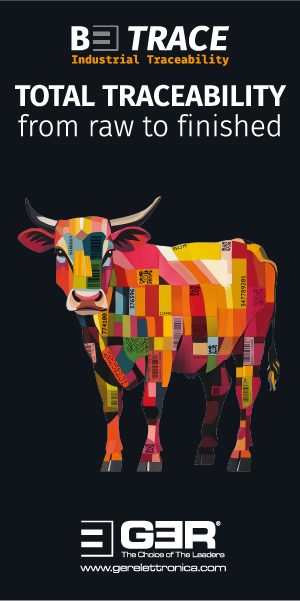Market Intelligence – 09.11.21
Macroeconomics
It is a great pity to see that Ethiopia, which in the recent past was rather conspicuous for its stability and positive development, has relapsed into conflict. For the sake of the people there, we can only wish for a quick return to peace.
The COP26 climate conference in Glasgow is generally perceived so far as a failure. Climate activists in particular feel great anger about the results, or rather the failure to achieve results, of this event. Those who only had expectations of positive resolutions are certainly disappointed. But perhaps, after all the years that this conference has been taking place, it is also an important realisation for many in wealthy countries, and especially politicians nationally, that the interests of all people on this earth are completely different. In addition to all the anger, a certain pragmatic respect could also emerge.
Renunciation can only be practised by those who already own something. For many others, the problem does not arise at all and their list of priorities looks quite different.
The rapid increase in covid-19 cases since the beginning of autumn in the northern hemisphere clearly show that the pandemic is far from over. According to all that is known and can be seen to date, infections are increasing rapidly despite relatively high rates of vaccination and have already returned to record levels in some cases. As long as this does not lead to an overload of hospitals and a massive increase in severe or even fatal cases, it will not be a major cause for concern.
However, if there is a different development in the next few weeks, then the question arises again as to what decisions governments will take and how strongly these will then affect public life again. As far as China is concerned, it is already clear that the government will maintain its zero tolerance position and fight the spread of the virus with lockdowns, travel restrictions and other restrictive measures. This means that for many products, a considerable strain on the supply chains must continue to be expected. The coming weeks will certainly be decisive in many countries and especially in China, where the Winter Olympic Games (February 4) and Chinese New Year (February 1) are already influencing political decisions quite significantly.
In the financial markets, the discussion about interest rates and the threat of inflation is dominant. The US Federal Reserve is already demonstrating that it will end the money glut in the foreseeable future. In Europe there is not much sign of this yet, although for various reasons this continent is particularly threatened by inflation. The European Central Bank officials, however, remain convinced that the price increases are only of a temporary and short-term nature; how they have come to this assessment remains their secret.
The stock markets continue to be quite unmoved by the situation. The money glut continues to make the allocation of capital very difficult, and therefore the stock market is still the most attractive form of investment for many. What will be problematic is the moment when corporate results no longer meet expectations and then, under certain circumstances, the phase of rising interest rates will be unavoidable at the same time. That is a combination that will be very problematic for the economy.
The price of gold has only just cleared the $1,800 hurdle again. Oil prices have swung sharply above the $80 per barrel level in recent days and the US dollar has resumed its trend of firmness following the decisions of the US Federal Reserve, ending the phase at a level near $1.15 to the euro.
Leather Pipeline
We can debate how much influence macroeconomic and political decisions have on the leather sector. In the short term, the influences are rather small, but in the long term they are undoubtedly considerable.
Just take the decision at COP26 in Glasgow of more than 100 countries to reduce methane emissions by at least 30%. One might see this as a classic token gesture to generate positive reports from the conference, but it is clear that it focuses on a sector from which one can expect the least resistance: agriculture, especially the livestock sector.
It is thus clear that, in some regions, decisive changes in livestock breeding and slaughter are imminent, perhaps over a time frame of three to five years. Whether the total global amount of methane emissions from livestock farming will then change remains to be seen. It is more likely that technical measures and possible changes in cattle feed will be able to achieve more than a reduction in livestock farming and slaughter in individual countries. For leather producers, depending on where they are located, it means that they will have to carry out an analysis of their raw material base and availability.
The leather industry has always been confronted with one major problem, which has always caused an irregularity. This is the out-of-sync and hardly controllable balance between the supply of raw material and the demand for leather. The meat industry produces the by-product in the quantity it wants to; this depends only on meat production levels. Downstream, the leather industry has only limited influence on the use and application of leather. But the raw material is produced in much more regular and consistent quantities and does not experience the same seasonality of demand.
These effects are exacerbated by asynchronous pricing. Raw material prices are decided at very short notice and the leather industry has to accept price commitments over a much longer period of time. This situation has always been one of the central problems of the supply chain, but despite all the complaints and problems, people have learned to deal with it to some extent over time. Whereas the production units that are essentially dependent on a supply of raw materials from overseas have tended to choose a price-oriented and speculative variant, the leather producers who are close to their preferred raw material are more oriented towards a just-in-time approach. Both seek an acceptable average price over the cycles.
In addition to this basic situation, there are now a number of other factors that make reliable, entrepreneurial planning almost impossible. Here, for example, are the supply of chemicals, the considerable problems with labour, the massively increased energy costs with a completely unclear future, the influences of delayed logistics and, among many others, of course, the unclear future that leather has to expect as a material. All these factors have an additional massive effect on the imbalance that results from the asynchronous relationship between raw material availability and leather demand. Everyone knows that an existing imbalance is amplified exponentially by the other influences.
Automotive leather is a sector that is particularly affected by these circumstances. This is especially true for the industry in Europe, which, in the wake of modern management theories, has focused on optimising just-in-time production. Product and production flow are paramount, although it is a classic contradiction to the basic requirement in the market.
If you look at this microcosm in Europe, you can see what happens when there is no professional exchange of facts between all participants in the chain. The why and how would be the subject of a much longer process. It can be said that leather producers do not have a reliable partner in their customers in the automotive industry and that the cattle slaughter industry is not prepared to take demand risks into account.
From what we can gather from various sources, the automotive industry has long hidden behind the uncertainty of supply of various components. However, if one knows its obsession with planning, it must at least be strongly doubted that the real demand for automotive leather in the course of 2021 should have been so unclear that the adjustment in leather production could not have been better. Even into the summer the demand for high-quality hides for the industry’s automobiles was so high that the considerably increased price for raw hides was approved at the same time as the production costs increased. This happened because the orders received had to be covered. At the same time, the call-offs were lagging behind the orders. As a result, some companies had to pull the ripcord at some point and production had to be cut back considerably within a very short period of time, reflected immediately in raw material demand owing to just-in-time planning.
There are very few things that could be more poisonous for a just-in-time supply chain, especially when it comes to a raw material that does not actually allow for intermediate storage. A chilled skin does not have a particularly long shelf life.
The consequences became apparent in late summer. With the simultaneous increase in slaughter and the abrupt drop in production, there has been a massive jam in the chain in recent weeks. It may affect individual market participants differently, but in general it always develops into a problem for everyone.
Many will now object that earlier knowledge of the situation would have made little difference to the problem today. We see that somewhat differently. In the end, of course, you can’t change the facts about the availability of raw materials and the demand for leather, but you can certainly reduce the risks in the chain, in which everyone ultimately depends on each other. On the basis of community trust, it is ultimately only a question of distributing the economic risk appropriately. In the end, of course, everyone knows that at some point this particular hide will be used to make leather and go into an end product. It is also true that the hide is easier to store in its processed state than in a refrigerated state. At the same time, it is also true that hectic price changes are never a good thing for the leather industry, and certainly not in times that bring many other risks with them, as is the case at the moment.
Some of our readers will remember that we found the price developments in the summer problematic. Especially for the special raw materials for the automotive industry, which are so strongly determined by production volumes. In the second and third quarters the available quantities are usually lower and in the third and fourth quarters they are correspondingly higher. Here, too, the leather industry would be challenged to think about sensible solutions to better adapt its production to raw material availability. Some will now object that this is all perfectly normal and simply the law of the market. That is certainly true and no doubt a very popular point of view. After all, many are enthusiastic about the idea that their individual knowledge and experience puts them in a position to benefit from such developments. However, from a general point of view, it would be difficult to prove this and it is almost certain that the general harm is much greater than any potential benefit.
We are all fighting for leather to become a universally respected and sought-after material again. It cannot be pointed out often enough that in the field of sheepskins we have had to live with this situation for a long time already and that there is no longer a market for making leather out of all the raw material available. Therefore, a significant part of it is no longer collected or preserved; it is either deliberately destroyed or it rots somewhere.
The majority of players in the bovine sector continue not to see this as a serious, growing threat. They might want to take a very close look at the global production of bovine hides. They would be surprised to see how many cattle hides are no longer being taken up, even now, because there is no longer an adequate return for them. No one is going to bother with the processing of this commodity if there is no longer adequate remuneration for it. Since leather can be replaced by other materials, there is no incentive to change if leather as a material is no longer held in high esteem.
It must therefore be in everyone’s interest to ensure that leather recaptures interest, making it possible to market the available raw material accordingly. This also includes avoiding erratic price changes wherever possible. Considerable price fluctuations are among the things that detract from leather’s attractiveness in industrial production. A more sensitive price control in the raw materials sector would be extremely helpful in creating stable demand in the long term.
Of course, we know all the objections to this and especially the one that insists an individual cannot do anything unless everyone else behaves in the same way. It’s hardly possible to do anything to counter this; it’s a similar situation in the climate change debate in which people also question the different one individual, one family or one community could make. We will not give up our idealism with regard to leather and the sustainable use of an available by-product.
In the split market, too, we have to adjust to changed basic conditions. Especially in the area of gelatine and collagen, the reduced production is slowly making itself felt. This is not only true for Europe but also for other regions. Here, too, we are currently struggling to find a reasonable balance between supply and demand this winter, while at the same time energy costs have risen extremely sharply. In the leather sector, the search for cheaper materials is also making itself felt. Cheap, thin split, which can also be sold as leather, has gained a certain appeal. However, it is only available in certain quantities at a low price.
There has been relatively little change in lamb and sheepskin in recent weeks. The diverse niches, and the high-value sectors notice very few problems in leather demand. Special types are finding a lot of demand and there are even origins that are not far from their historic highs in prices. Unfortunately, the bulk of the business simply cannot benefit from this.
The luxury sector and the presentation of fantastic leathers in glossy magazines simply does not spill over into the mass market. Manufacturers and retailers find the material too risky and their fear of possibly not meeting the taste of the masses is greater than their willingness to go for something new and attractive again. Nevertheless, we stand by our opinion that, perhaps very slowly, interest is reviving in the fashion sector in the properties of leather, despite Stella McCartney and greenwashing.
We expect further challenges in the commodity market in the coming weeks. Asian tanners have increasingly stocked up on raw materials from the US at significantly reduced and favourable prices. The European market is now in the adjustment phase that has been necessary for so long. The imbalance we described above will probably be with us for some time. The interruption of production over the Christmas period will be followed by production cuts in China. It is hard to predict what decisions the government in Beijing will make regarding energy shortages and the simultaneous desire for blue skies at the Winter Olympic Games in Beijing in February. However, the Chinese leather industry is known to be highly sensitive to these risks. At the same time, we are still dealing with the problems in the Chinese real estate market and, to add to the uncertainty, no one knows at this stage what decisions will come into force if the pandemic flares up again. Production could suffer and logistics could also be significantly affected once again.
In Europe, much will depend on what decisions the car industry makes for the near future. If there is no improvement, the backlog of heavy raw materials planned for this sector will probably increase further. The current price levels mean this raw material is of little interest to other sectors. For the other regions of the world, much will now depend on whether the Chinese leather industry sees the reduced price level as an invitation to build up stocks. Basically, there are many indications at the moment that they will continue to be cautious in their outlook. It is not just about the demand for leather, but delivery and payment also play an essential role. At the moment it seems that we have to expect a very lively end to 2021.
















